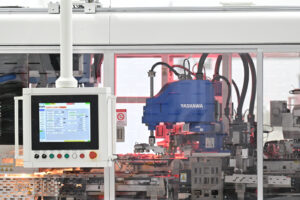Do manufacturing jobs really depend on CSG? > Check the facts
Who: “[CSG mining] can secure the more than 15,000 industrial jobs which are dependent on gas supply as a feedstock, and the further of 2.5 million people who are employed by those companies who use natural gas for power. However, it will require putting in place solutions today and not waiting for tomorrow.” James Baulderson; Santos vice-president, Eastern Australia.
The claim: That allowing CSG to be extracted in NSW will secure 15,000 industrial jobs and 2.5 million jobs in industries that use gas for power.
The facts: The Australian Industry Group (AIG) has reported that: “Metal products, petroleum and chemicals and non-metallic mineral products account for about 85 per cent of industrial gas consumption in Australia.” These industries “could lose competitiveness” when gas export facilities come on line at Gladstone due to price increases.
Data from the Bureau of Resources and Energy Economics shows that 91 per cent of gas consumed by businesses in Australia is used by the mining and manufacturing industries. Census data from the ABS show that these industries employ around 300,000 workers in NSW. The businesses employing the other 2.2 million workers account for less than 9 per cent of gas consumption.
The finding: Instead of securing jobs in gas-intensive industries those jobs will be at risk when gas exports push the domestic price of gas closer toward the international price. For other industries currently using gas for power (employing approximately 2.5 million people in NSW) non-gas power options mean the gas price increase will not significantly impact on their business. Increasing gas supply will not offset the substantial price increase causedby linking to the world price.
Discussion of evidence: Wholesale gas prices in eastern Australian are predicted to rise substantially in the eastern market when for the first time it will be possible to export gas via three LNG plants currently being constructed near Gladstone in Queensland. The world price for gas is substantially higher than the eastern market price. Additional gas supply will only lower the gas price if that supply is large enough to lower the world price. Additional supply of CSG in NSW is not likely to have a large impact on the world price and it will certainly not offset the large price increase caused by linking to the world market.
The AIG has reported that once gas exports begin through the three new export facilities at Gladstone domestic prices will rise toward the international price.
At higher prices (>$10/GJ) some industrial gas users could lose competitiveness … Fertiliser and other chemical plants would be at risk, as would alumina.
NSW manufacturing companies will need to work out if there businesses are viable at these new higher prices. The claim that a further 2.5 million jobs in businesses that use gas as an energy source can only be “secured” by extracting gas in NSW, does not take into account the projected price increase for gas. The majority of the gas is used by a small number of gas intensive industries and these are the industries that will be badly affected by the price rise. Presumably, most of these jobs are included in the “more than 15,000 industrial jobs which are dependent on gas supply as a feedstock”, and not among the companies employing the 2.5 million “who use natural gas for power”. For those companies using gas a power source, when gas prices rise many of these companies may look for cheaper electrical alternatives and are unlikely to be substantially affected.
Any increase in gas costs to these businesses will be as a result of gas export companies including Santos requiring local consumers to pay international prices.
Between the Lines Newsletter
The biggest stories and the best analysis from the team at the Australia Institute, delivered to your inbox every fortnight.
You might also like
Understanding the Future Made in Australia
The Albanese Government’s industrial policy framework – the Future Made in Australia Act (FMAA) – has finally been unveiled.
Muddled answers and outright lies: what the Biden-Trump debate says about the dire state of US politics
There are no parallels for the first debate of the 2024 US presidential election cycle.
Dutton’s nuclear push will cost renewable jobs
Dutton’s nuclear push will cost renewable jobs As Australia’s federal election campaign has finally begun, opposition leader Peter Dutton’s proposal to spend hundreds of billions in public money to build seven nuclear power plants across the country has been carefully scrutinized. The technological unfeasibility, staggering cost, and scant detail of the Coalition’s nuclear proposal have


